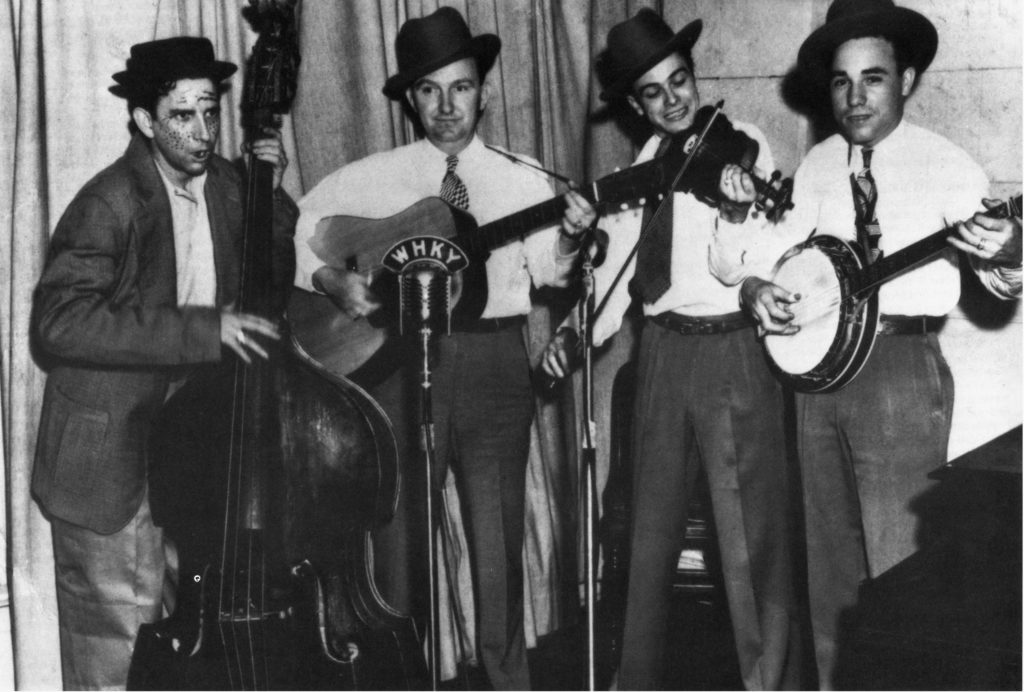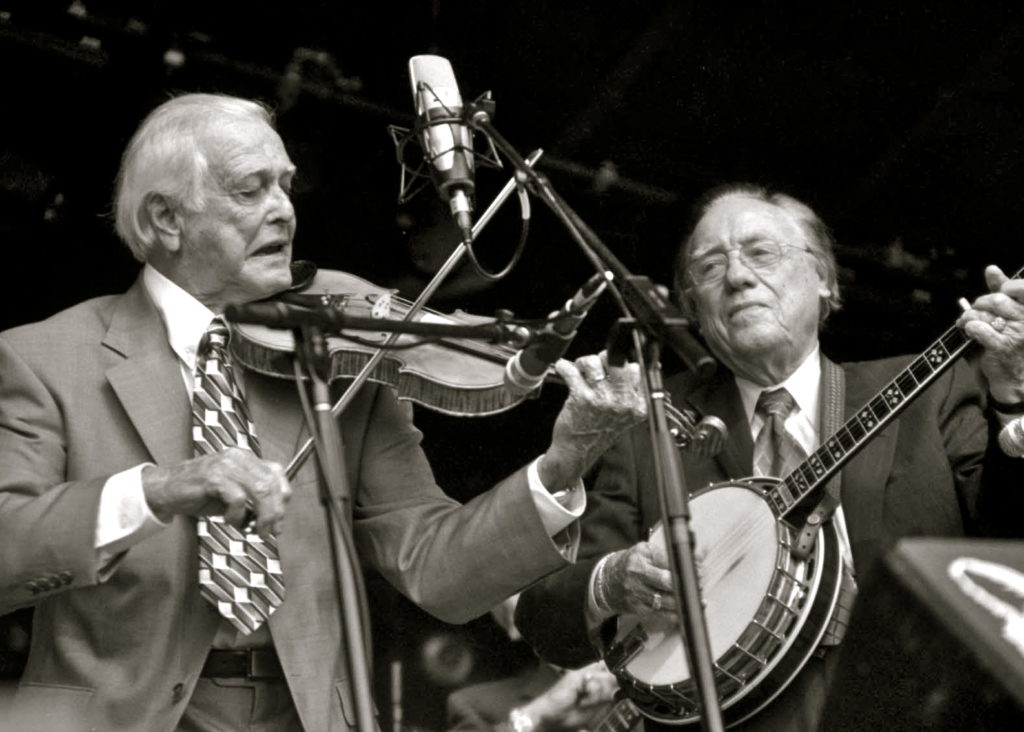by Wayne Erbsen (photos courtesy of John Miller)
Jim Shumate: Pioneering Bluegrass Fiddler – FRC727
To die-hard fans of bluegrass music the name Jim Shumate is practically a household word. After all, he played with Bill Monroe in the mid 1940s and was the first fiddler for Flatt and Scruggs when they formed their own band, the Foggy Mountain Boys. The three tracks he recorded with Lester and Earl, “Cabin in Caroline,” “We’ll Meet Again Sweetheart” and “God Loves His Children” are some of the most revered songs in the entire bluegrass repertoire.
I was familiar with these early recordings of Flatt and Scruggs when I lived in my home state of California. You can say I cut my teeth on them. In fact “Cabin in Caroline” was one of the reasons I decided that I was living in the wrong state, and I eventually made my way to North Carolina to see what all the fuss was about.
Although I first landed in Charlotte in 1972, within two years I moved to Hickory, North Carolina where I got a job as visiting artist in residence. Just before I made my first trip to Hickory in the Fall of 1974, a fellow fiddler named Bruce Johnson advised me that the legendary fiddler Jim Shumate lived there and he strongly suggested I look him up.
A few months later I found myself walking down the main street in downtown Hickory and happened to have my fiddle tucked under my arm. Heading toward me on the street was a nice looking middle aged man dressed in a light colored business suit. As he walked past he smiled and asked, “what kind of a fiddle do you have there, young man?” We started chatting about fiddles and it didn’t take long before I realized I was standing in the presence of a living legend, Jim Shumate. Everything I had learned about him swirled around my head and I managed to ask him if he’d be up for giving me a few fiddle lessons, which I sorely needed. A friendly fellow, he readily agreed and I jotted down his phone number. The following week I called Jim and he suggested that he come over to my place for a lesson. I lived in a two story stucco cottage just behind the Hickory graveyard, which was a quiet place to have our lessons.
I can’t say I was a very good student, but just being in the presence of this wonderful, warm man was worth any price. Actually, when I asked him what I owed him for our first lesson, he said he wouldn’t charge me a cent. The price was right, because I didn’t have that much sense to start with. Over the following months Jim came over quite often, and it didn’t take long for us to become fast friends. At some point I realized I’d be a fool if I didn’t take this golden opportunity to interview Jim about the pivotal roll he played in the history of bluegrass music. I fired up my cassette tape recorder and learned that Jim was the one who first created the standard fiddle kickoff to bluegrass songs. He also contributed many of the standard licks that bluegrass fiddlers the world over use today when they are speaking the language of bluegrass.

Bill Monroe and the Bluegrass Boys, (Left to right) Andy Boyett, Lester Flatt, Stringbean (David Akeman), Bill Monroe (seated), Jim Shumate, Sally Forrester, ca. 1945, Courtesy Smithsonian Institution and Country Music Foundation Library Media Center, Nashville, Tennessee

Bluegrass Boys in 1945: Lester, Jim, and Wilene (Sally Ann) Forrester in the back; David Akeman, Monroe, and Birch Monroe
Jim’s stories about his days with Bill Monroe and Flatt and Scruggs were riveting. I learned that Monroe used to go on tour with his own circus tent and bleachers and a crew to set it all up. For his band he mainly hired men who could play baseball on a semi-professional level and I found out how Monroe’s band/team would come into town and challenge the local ball club to a game. Of course, after the ball game was over, people stayed to be entertained by Bill Monroe and the Bluegrass Boys. By the way, at this time Sally Forrester was in the band singing and playing accordion, so her job as part of the baseball era was to sell tickets and help man the concession booth, along with Lester Flatt’s wife, Gladys.
Even though Jim hadn’t been a touring musician in almost thirty years, I found that his fiddling was in fine form and at 56 years old, he seemed to be at the top of his game. Along about this time I realized that there would be a lot of bluegrass fans who would drool to listen to an album of Jim fiddling, so I asked him if he would be open to my looking for a record label to record him. Jim was totally open to the idea, so I got in touch with my friend, Dave Freeman, who owned Rebel Records. Dave suggested that he would need to hear a recording of what Jim sounded like currently, so that was the impetus for me to borrow a high quality tape recorder as well as mics and stands and everything else needed to record. The one thing I couldn’t borrow was an engineer, so I did that.
Jim didn’t have a band at that time, so with his blessing I got on the phone and invited bluegrass banjo player Marc Pruett to join the session at my house in Hickory the following week. I also got in touch with Albert Maples from just outside Hickory to play guitar on the session. Maples had a way of singing and playing guitar that perfectly mimicked the way Lester Flatt played and sang. I chimed in on mandolin. My idea was not to make a finished album, but merely to have a promo tape that I could use to shop around to bluegrass record labels. With the finished tape in hand, I sent a copy to Dave Freeman to see if he would record an album of Jim’s fiddling. Dave wrote back that he enjoyed the recording, and that this was the kind of thing that he used jump on. Regretfully, he declined to offer Jim a recording contract. Not to be deterred, I next approached Bobby Patterson of Heritage Records up in Galax, Virginia. After hearing the tape, Patterson said he would be delighted to record Jim, and so my little home recording went back in the closet where it’s been for the past forty years.
I am beyond excited that this recording will soon be released. Finally, a new generation of bluegrass fans will get to hear the real deal.




